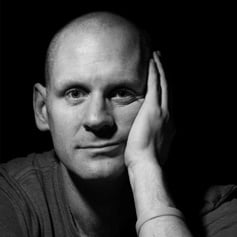Marginal gains is becoming perhaps one of the biggest innovations in business thinking in recent years but was probably made most famous by David Brailsford in British cycling.
For those of you who have followed Brailsford’s success through British cycling and the Olympic team through to Team Sky, you will be aware of the concept of marginal gains thinking.
Effectively marginal gains is breaking a large problem into tiny problems and solving the tiny problems. Problems that are even so small that Brailsford will describe them as ‘almost negligible’ but they all add up to an enormous leap forward in terms of progress or performance. This is something that we have over the years applies in spates at the practice but over the coming two – three years (for reasons that will become apparent later) we will be imbedding into our culture. Along with concepts to eradicate failure denial (the denial of problems is something insignificant) and also strategies to combat cognitive dissonance and I will blog about these concepts later.
To give you an example though of how marginal gains work outside of business and in everyday life I would like to write a little bit about how it has improved my training for triathlon and you will see then how it can apply to almost any aspect of your life.
I live approximately 1.25 miles away from my practice (lucky I know) and historically have either driven (ridiculous) or ridden my bike. The bike ride is far too short to the practice and I can’t even get my heart rate up enough for it to be of any decent benefit as far as training is concerned, but it is quite lovely and very quick. Fairly recently I started walking to work and it takes approximately 11 – 12 minutes and is a fantastic little training session in terms of low heart rate, fat burn and also just tremendously enjoyable; walking through the seasons back and forwards, the end of the day is particularly nice. It does though have enormous benefits, I am able to listen to my audiobooks therefore have 25 minutes a day of free time listening to the audio books and it’s not any slower than in the car. I am also able to walk in shorts and a t-shirt wherever possible even in winter which gives me some sort of exposure to sunlight and Vitamin D which I think helps eradicate the sadness I get over the winter.
There is another aspect to this because on my way to work I pass the David Lloyd Leisure Centre which I am not a member of. I swim a lot for triathlon training but I travel to Virgin which is approximately 10 minutes away in the car. The Virgin pool is beautiful but is 24m long for some ridiculous reason where all other pools are 25m. The water quality at Virgin is tremendous and the service is great but it is a full 10 – 15 minutes to get there and the same to get back (30 minutes which I really do not have) and the pool is 1m shorter than David Lloyd. The disadvantage of David Lloyd is that the water quality is worse (they need a discussion about that) and the cost is higher, although I am luckily in a position where that is irrelevant. If I think about swimming an extra metre in the David Lloyd pool it is probably insignificant, but I swim at least twice a week and at least 100 lengths every session therefore every week I am swimming 200m less at Virgin that I would at David Lloyd. If I had an annual training session of 40 weeks (probably more than that) that is 8000m of swimming that I am losing and if I swim 2000m a session of appropriate swimming then that is 4 full sessions, therefore 2 full weeks of swimming that I am loosing a year by losing a metre a length. When I get to my next event, next October hopefully that 2 weeks of swimming will seem like a lot that I have lost. This is marginal gains in action. Add into that the 30 minutes that I lose every time I go to Virgin could be added onto the swim session at David Lloyd, it then becomes a no brainer and I am changing gyms.
The walk to work and the gym that I swim at are just examples of marginal gains. Imagine how you could apply this to your dental practice. If you looked at it through a lens of marginal gains and marginal improvement the benefits to your patients, your staff, your business and your staff could be absolutely enormous. This has to be the future and we have to create the time to do this.
More blogs about marginal gains coming up and the ones about cognitive dissonance and failure denial will also be quite interesting for people interested in this.





.png)

Leave a comment